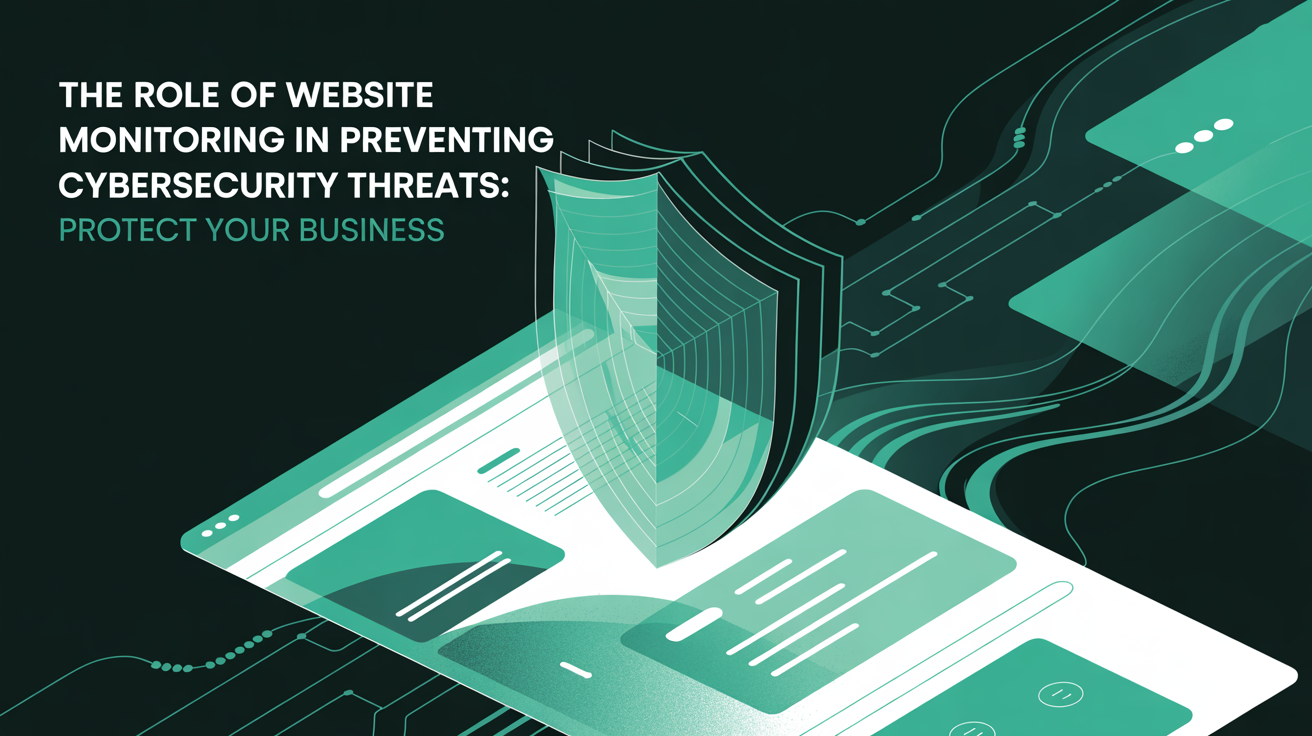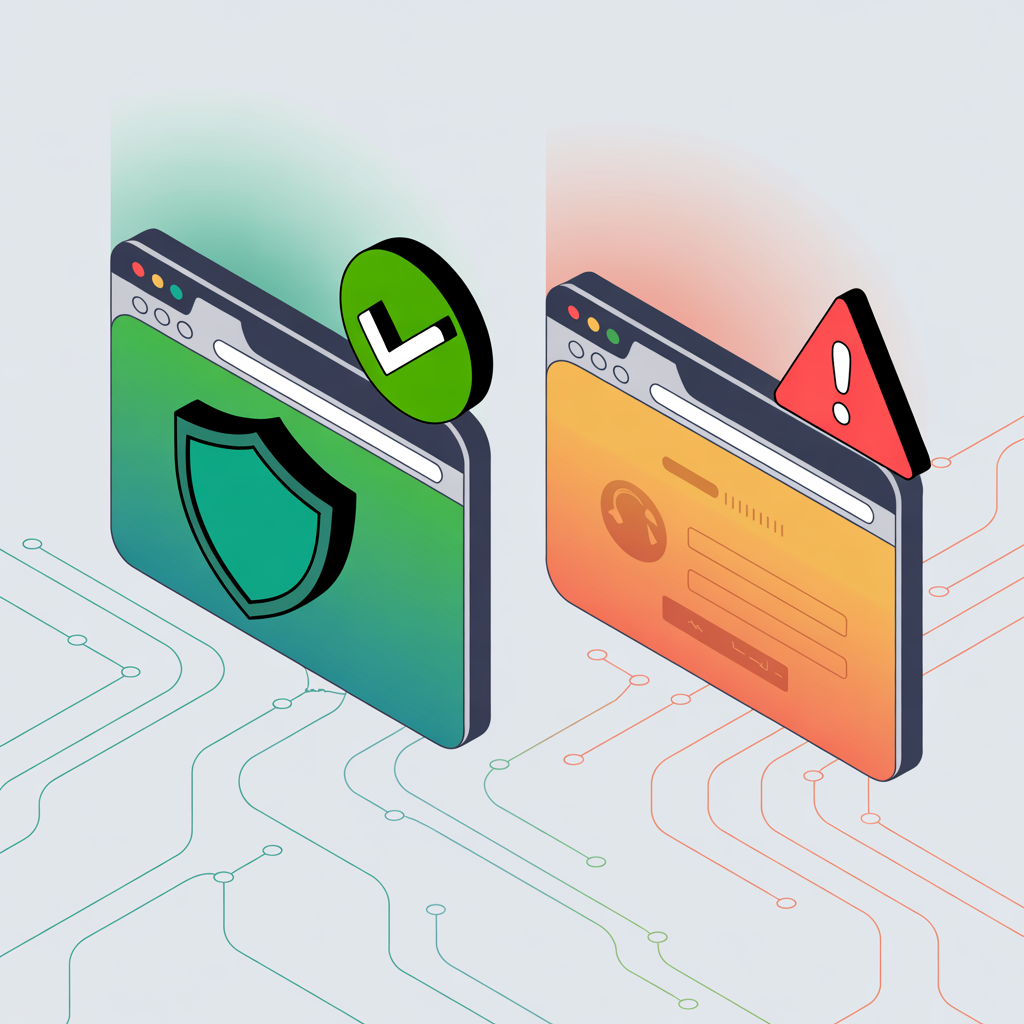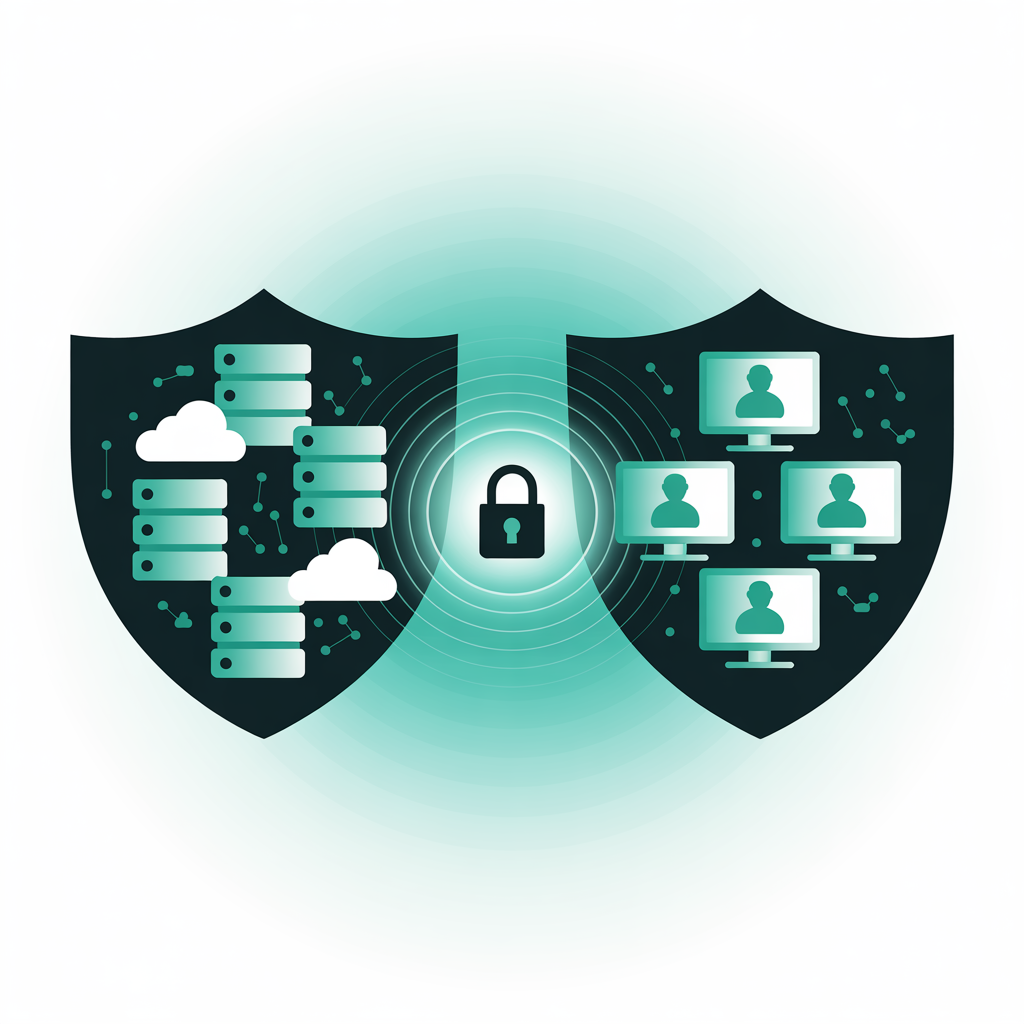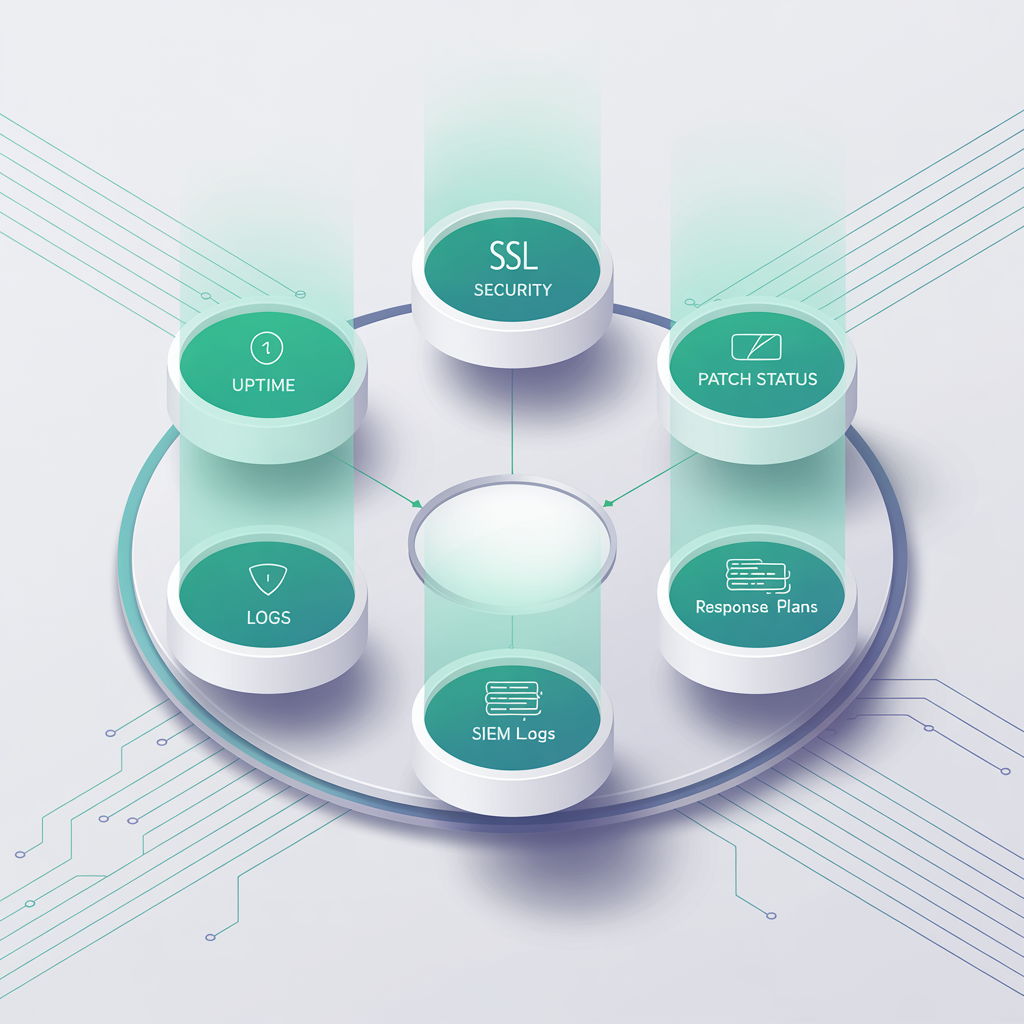The Role of Website Monitoring in Preventing Cybersecurity Threats: Protect Your Business

Key Takeaways:
-
Website monitoring is a proactive defense that detects performance issues and cyber threats before they escalate.
-
AI-driven monitoring improves threat detection accuracy and helps identify abnormal traffic or login patterns in real time.
-
Integrating website monitoring with employee monitoring strengthens protection against both external and insider threats.
-
A well-structured monitoring strategy reduces downtime, enhances compliance, and safeguards business reputation.
Nowadays, a website is not only an online address; it has become synonymous with the front door of your business. However, that front door is open for all, even for cybercriminals. A single breach can turn your business upside down.
That’s why modern businesses can’t afford to treat employee monitoring by which apps and websites people visit an afterthought. Today, our focus is to cover everything about website monitoring and why it’s essential for your business!
What Is Website Monitoring?
Compared to a simple monitoring system, website monitoring is an intricate system that checks your online infrastructure. It monitors everything, from performance slowdowns to security threats.

This is what a full website monitoring system includes:
- Uptime Monitoring: This makes your website available 24/7, 365 days. Downtime can signal an attack or a system failure.
- Performance Monitoring: Focuses on the load time and how the server responds. If the pages are loading slowly, it can mean overloads or ongoing Distributed Denial-of-Service (DDoS) attacks.
- Security Monitoring: Anything with suspicious activity, a change in SSL certificates, this guy handles it. Even a phishing website impersonating you is no match for this.
- Log and Traffic Monitoring: It is dedicated to looking for odd logins or brute force attempts and preventing them.
All of these monitoring systems come together to create the perfect ecosystem, which alerts you in times of emergency.
Common Cybersecurity Threats that Website Monitoring Helps Prevent
Yes, even with the best line of defense, your impenetrable online kingdom can fall. Website or online activity monitoring helps you take countermeasures before it’s too late.
Here are some of the very frequent cybersecurity threats that you can face or prevent:
Severe DDoS and Availability Attacks
There was news of Cloudflare mitigating a 7.3 terabits per second (Tbps) DDoS attack on a hosting provider. Basically, what Cloudflare did was to tackle the flock of fake traffic thrown at the provider.
With performance monitoring, this type of attack can be predicted by detecting abnormal spikes. Then, your team or Content Delivery Network (CDN) can block the unwanted traffic.
Credential-Stuffing and Brute Force Login Attempts
Another classic weapon of cybercriminals is to steal credentials and attempt large volumes of logins. Monitoring can spot repeated failed logins or unusual access patterns from new regions. This clearly indicates that credential stuffing and prevention are possible.
Exploitation of Vulnerabilities
Another type of attack comes from exploiting weaknesses in websites. Hackers scan for weaknesses such as Cross-Site Scripting (XSS) or outdated plugins. Monitoring tools can flag file or document changes, unpatched systems, or unusual scripts.
Those are very common indicators of vulnerability exploitation.
Fake or Phishing Websites
Well, even though studies show that Americans are bad at detecting phishing websites, website monitoring is not. Phishing is basically someone creating cloned sites to steal customer data.

Brand monitoring and automated takedown services can detect phishing scams, fake domains, or unauthorized SSL certificates.
Supply-Chain & Insider Threats
Even your trusted vendors, 3rd party service providers, can turn on you. Having access to your website can be an easy target for insiders to exploit. Monitoring connections, software updates, and endpoint activity reveals unusual data transfers or malicious processes before they escalate.
However, these types of cyber attacks are constantly evolving. With the emergence of AI-generated phishing attacks, deepfake technology, and social engineering scams, the threat landscape is growing stronger.
Monitor employee activity to stop insider risks
Does Website Monitoring Protect Against Cyber Threats?
Website monitoring is not an alarm system; it’s a full-blown prevention system. It’s a finely layered system that adds tons of value, such as:
Continuous Availability Checks
As mentioned before, uptime monitoring always checks your site speed and if there are any system issues. If it notices the site slowing down or going offline, it immediately alerts you.
The best practice is to move to backup servers or activate CDNs before downtime affects customers.
Anomaly & Behavior Detection
As everything has AI now, the monitoring tool also uses AI & machine learning to actively look for abnormal traffic. By doing so, it can detect sudden spikes or odd patterns such as failed logins or requests from countries that do not really have regular traffic.
As AI and ML models are improving, it is getting 30% more accurate at detecting fake traffic than older generations, a study shows.
Vulnerability and Patch Management
Regular automated scans search for outdated software or unpatched plugins to strengthen vulnerabilities. They also verify that SSL certificates are valid and haven’t been tampered with.
Log Analysis & Event Correlation
Cutting-edge monitoring systems save and send all security logs from servers and apps to Security Information and Event Management (SIEM) platforms.
Combined with Security Orchestration, Automation, and Response (SOAR) workflows, SIEM’s goal is to find hidden threats and trigger fast responses.
Endpoint Monitoring Connection
At the end, all of the intricate website monitoring communicates with employee monitoring tools to find out any insider threats. It looks through different employees’ browsing history, unauthorized logins to find any suspicious activities.
Due to endpoint security, your Security Operations Centre (SOC) can respond faster and more effectively.
Detect suspicious browsing in real-time today
Why Even Combine Website Monitoring with Employee Monitoring?
By now, you might have already understood that website monitoring is not just an external threat. It can be caused by your insider threats, too! That’s why, when you deploy website monitoring coupled with employee monitoring, it creates a perfect all-around protection system.

Here’s why combining them makes sense for employers and managers:
- Extreme Visibility: Go beyond your typical attendance tracking and see what website visits, logins, and sessions are hurting your website!
- Quicker Response: With perfect synchronization of your systems, an emergency alert can lock out any endpoint sessions, protecting your website from malware attacks.
- Insightful Forensics: Activity logs, screen captures, and process data help to put together all the pieces behind a security incident.
- Compliance Readiness: Many standards, like PCI DSS and GDPR, require data access logging and Data Minimization. Integrated systems can easily do that.
- Improved Accountability: Transparent employee monitoring encourages accountability & productivity, reducing the chances of insider threats.
With platforms like Apploye, it can become easier to track employees, get insightful reports, limit damage, and maintain compliance.
Get complete visibility into team activities now
Building a Practical Monitoring & Response Checklist
You might be wondering, it will take months to implement such a solid system. Sorry to disappoint you, but you don’t need large enterprises or huge resources.

This is a basic practical checklist that you can follow (even as a startup):
- Website Uptime Monitor
- SSL Certificate Monitor
- Vulnerability Scanner
- SIEM Tools
- SOAR (great for repetitive actions automation)
- Employee Monitoring
- Incident Response Plan (a clear framework on the who, how, whys)
- Regular Testing of stimulated attacks or phishing exercises.
If you follow this checklist, then it will be quite enough because SIEM tools are far more advanced than regular systems. A 2024 study clearly showed that integrating advanced analytics & SIEM platforms improves breach detection speed by 35%, compared to traditional systems.
Keeping Website Monitoring System Compliant is a Challenge
Most businesses fail to realize that even this type of monitoring requires transparency and privacy. Without a defined framework, company policy, and business ethics, the whole system will crash.
Here’s how you can stay compliant:
- Maintain proper data collection and usage policy
- Protect your access points with authorized-only views
- Secure the log data both in transit and at rest with encryption
- Use Multi-Factor Authentication
- Follow a proper privacy notice template and monitoring disclaimer
- Regularly review configurations and retention policies for compliance
By following these basic steps, you can easily stay transparent, legal, and protect your website! You can also use AI-driven detection for at least 50% more efficiency.
Stay compliant with automated activity reports
Measuring the Impact of Website Monitoring
Without properly measuring the impact, you won’t really know the exact significance. So, here are the metrics that you need to know for insightful measurements:
Track security metrics with detailed analytics
Conclusion
Website monitoring is not just about catching problems; it’s about preserving your business identity. SIEM, endpoint detection are just systems that help you to take your business to the next level!
So, you should not shy away from protecting the digital door of your business!
Protect your business with workforce monitoring
FAQs
Can website monitoring alone stop hackers?
Not entirely, as it's a signal layer. But combined with endpoint, SIEM, and incident workflow, it becomes a powerful detection and mitigation tool.
How can you protect your business from cyber threats?
You can protect your business by encrypting all data points, at rest and in transit. Regularly review your security protocols and update backup servers.
What is the difference between website monitoring and intrusion detection systems?
Website monitoring focuses on application-level, HTTP/HTTPS behavior, uptime, and anomalies. IDS (network-based) analyzes packet-level traffic and signatures, catching lateral movement or low-level exploits. The two complement one another.
How do alerts from website monitoring integrate with SIEM tools?
Monitoring systems send logs or events (via syslog, webhooks, API) into SIEM. Rules correlate multiple inputs (web, endpoint, threat intel) to reduce false positives.
How does machine learning help in detection?
ML models detect anomalies, adapt baselines, and catch zero-day attacks that lack signatures. However, they must be tuned to reduce false positives.
How do I monitor SSL certificates?
Use certificate monitoring tools to detect expiry or rogue certificates. Alerts should integrate into your incident monitoring pipeline.
Do phishing websites and AI-generated phishing attacks matter for website monitoring?
Yes, monitoring can detect newly created subdomains, redirects to phishing clones, and domain anomalies.
What compliance frameworks matter?
PCI DSS mandates logging and monitoring for card data environments. GDPR may require data minimization and proper logging controls. Always check your regulatory obligations.

